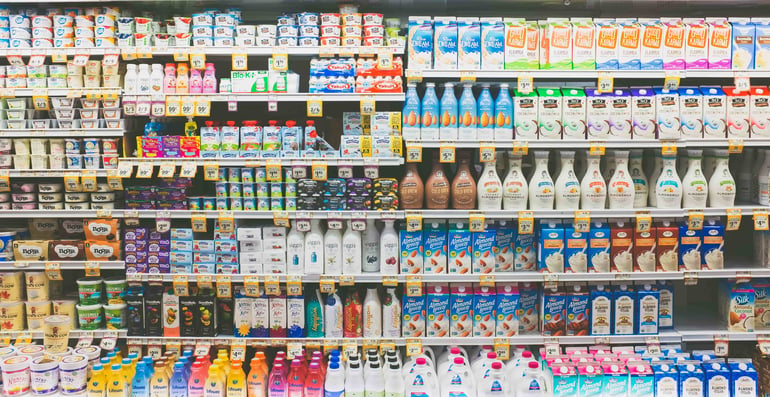Launching and growing an emerging beverage or food brand is one part art and one part science. But it always starts with passion. Especially as the retail sector continues to undergo massive transformation - powered by changing consumer tastes, cost pressures, and the growth of online channels, plus the resurgence of both retailers (and restaurants) that strive to offer greater convenience and healthier options.
Meanwhile, more retailers are focusing on private-label offerings such as Costco’s Kirkland brand and Whole Foods’ 365 Everyday Value, while new funding flows into upstart brands ($5.9 B across 1,300 F&B deals since 2012 according to CB Insights). With all this noise, brand entrepreneurs have a lot on their plate, and need to model themselves as a “disruptor brand” to stand out and beat their competition to market. Here’s how.
Think Fast and Act Like a Disruptor
Being a disruptor often goes hand-in-hand with building a lifestyle brand that appeals to enthusiasts or other passionate consumers that themselves like to “change the rules” - think of Health-Ade Kombucha, zero-calorie soda upstart Zevia, or even Red Bull. For these types of brands, their customers are often their best salespeople. And their brand marketers frequently leverage them in promotions in the field or in grassroots-style social media campaigns.
Another approach that applies both to growth brands and retailers is creating unique or unexpected in-store promotions and experiences, and incorporating clever/engaging details into your product or packaging to stand out from the crowd. Think of how your barista greets you in the morning or writes your name on your cup at Starbucks. Even these small exchanges and the look and feel of the product helps to create brand love - something I’ve researched and written about with brand maven Loie Maxwell.
Whichever approach you take, moving fast by testing your offerings and getting real-time feedback from the field is essential. Especially in “frothy” growth categories like functional beverages or premium coffees and teas. This type of small data is very much the currency for becoming more agile in your brand’s day to day work.
This means tracking everything related to the brand and progress vs goals, from consumer feedback and campaign performance, to team location and daily sales activity via a mobile CRM like Repsly.
Embrace Agile Methods
Fortunately there’s a science to this fast-moving approach, which comes from the world of product and software development: Agile methods. It turns out some of these same iterative, collaborative approaches also work well in sales and marketing (see Jim Ewel’s excellent work), and can help to drive competitive advantage for merchandising and other critical field activities.
At its core, being agile in your brand strategy means predictably responding quickly to market changes and working together (via cross-functional teams) towards a common goal that results in consistently delighting customers throughout their journey.
In practice, delivering the right tools to both managers and reps that embrace agile principles as well as a consumer-style interface can help teams continuously improve their field execution and get their team closer to their goals by:
- Streamlining data collection: using customizable mobile forms to ensure data is captured correctly, while empowering field teams to place orders right from their phones
- Standardizing best practices: getting reps organized for their day via centralized scheduling and account management, with updates automatically pushed to mobile users so reps are up to date on new opportunities
- Providing insights to all: getting real-time visibility into how your brand is performing, or even pushing recommendations (what product to offer, what stores are nearby) based on a rep’s location, account status, etc.
Beyond enabling your company to be more agile with the right tools, updating your physical touch points like in-store promotions and advertising are as important (or more so) for influencing purchase decisions than just being active on digital channels, according to a CMO Council Study. Meanwhile, consumers themselves view convenience and the ability to “See, touch, feel and try out items” as the top reason for choosing to shop in stores, something we recently discussed.
So even though investing in online channels is important to growing your brand, owning the store remains critical to getting your products in front of the right customers (and the right paths to market). Brands that can make their merchandisers’ everyday tasks feel like second nature - performing audits, maximizing facings, arranging visual displays, running promotions AND reporting back on their progress - gain a competitive advantage when it comes to winning in the field.
Getting your team do this work quickly and smartly by better leveraging the data they and others collect in the field is the promise of agile merchandising. And ultimately allows emerging brands to harness their passion and turn it into more profitable retail relationships, placements, and sales that help to grow their brand.




